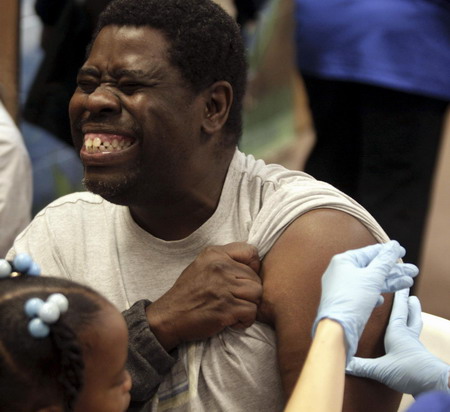 |
|
William Harris grimaces as he receives an H1N1 flu vaccination at a public clinic in Milwaukee, Wisconsin October 23. 2009. With a national shortage of the vaccine the City of Milwaukee Health Department has less than 7,000 doses of the vaccine available on a first come first served basis, local media sources report. [Agencies] 
|
On April 26, the administration declared H1N1 flu a public health emergency, allowing the shipment of roughly 12 million doses of flu-fighting medications from a federal stockpile to states in case they eventually needed them. At the time, there were 20 confirmed cases in the US of people recovering easily. There was no vaccine against swine flu, but the CDC had taken the initial step necessary for producing one.
"As a nation, we have prepared at all levels of government, and as individuals and communities, taking unprecedented steps to counter the emerging pandemic," Obama wrote in Saturday's declaration.
He said the pandemic keeps evolving, the rates of illness are rising rapidly in many areas and there's a potential "to overburden health care resources."
The government now hopes to have about 50 million doses of H1N1 flu vaccine out by mid-November and 150 million in December. The flu virus has to be grown in chicken eggs, and the yield hasn't been as high as was initially hoped, officials have said.
"Many millions" of Americans have had swine flu so far, according to an estimate that CDC Director Dr. Thomas Frieden gave Friday. The government doesn't test everyone to confirm H1N1 flu so it doesn't have an exact count. He also said there have been more than 20,000 hospitalizations.

